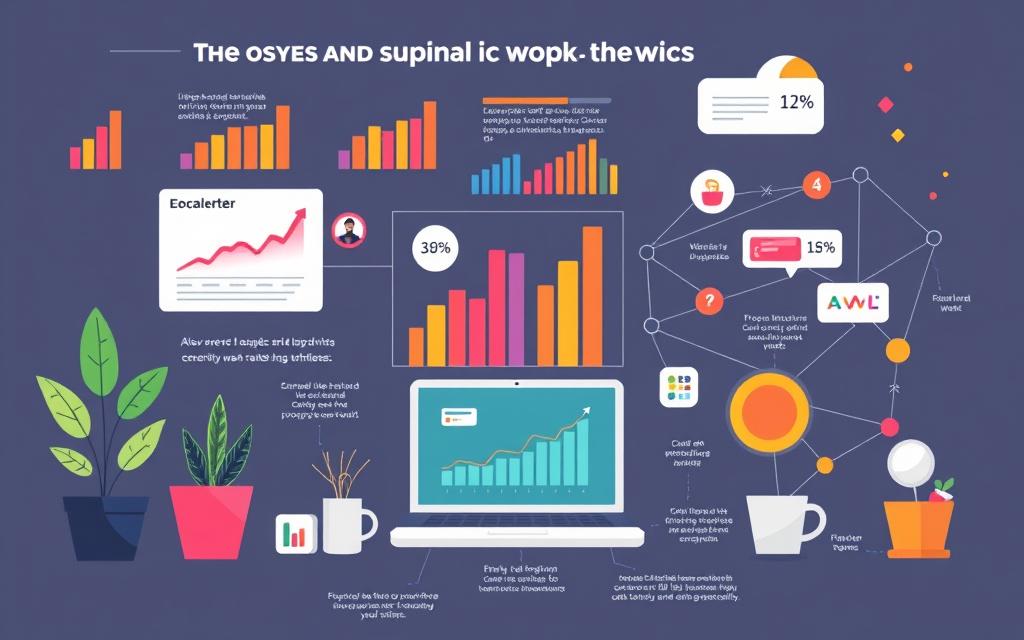Effective performance reviews play a pivotal role in shaping your team’s growth and development within the organization. While many of you may find performance reviews daunting due to negative past experiences, it’s important to recognize their significance in evaluating contributions and providing critical employee feedback. Research shows a consistent review process is essential for measuring progress, making the appraisal process smoother and more beneficial for everyone involved.
In fact, studies reveal that nearly three decades of advising senior executives have highlighted that many high-level managers have never participated in a performance review from their superiors. This absence of structure can lead to confusion and dissatisfaction among employees. Acknowledging the importance of transparent, two-way conversations can help bridge this gap, fostering a more constructive environment where feedback is not just a checkbox but a crucial element for professional development.
The Importance of Effective Performance Reviews
Performance reviews are more than just a routine task in your organization; they provide essential support for employee development and foster a culture of engagement. Recent research indicates that companies conducting effective performance reviews are 30% more likely to meet their financial targets. These evaluations offer a crucial platform to facilitate growth and development through structured feedback.
Enhancing Employee Development
Effective performance reviews serve as a vital tool for employee development. They outline clear expectations while aligning individual roles with the company’s vision. This clarity not only enhances understanding but also motivates employees to contribute meaningfully to the team’s objectives. An organized approach to performance reviews cultivates a culture that promotes positive feedback, recognition, and the discussion of career advancement, which hold high significance in employee retention.
Building Trust and Engagement
Establishing trust within your team relies heavily on transparent communication about the purpose and benefits of performance reviews. Open conversations encourage feedback and help employees realize that these reviews are opportunities for their growth, not just assessments. Organizations that adopt a culture of regular recognition through performance reviews see increased employee engagement, leading to higher productivity and job satisfaction. When employees feel valued, they are more likely to invest in their roles, thereby enhancing the overall workplace environment.
| Aspect | Impact on Employee Development |
|---|---|
| Clear Feedback | Enhances understanding and sets attainable goals |
| Recognition | Increases engagement and motivation |
| Career Growth Discussions | Reduces turnover by addressing advancement concerns |
| Structured Reviews | Fosters a culture of continuous improvement |
| Multiple Feedback Sources | Provides a holistic view of performance |
Understanding the Goals of Performance Reviews
Grasping the goals behind performance reviews plays a vital role in enhancing their effectiveness. Your performance review goals should align closely with employee goals and the broader objectives of the organization. When you set clear expectations and strive for alignment, everyone involved can work toward a shared vision.
Aligning Employee Goals with Company Objectives
Performance reviews serve as a platform for aligning individual employee goals with company objectives. By doing so, you help ensure that each team member understands their contribution to the overall mission. Engaging employees in this alignment process promotes a sense of ownership and accountability. Discussions during performance reviews can focus on how each individual can support the organization’s success, fostering motivation and engagement.
Identifying Skills Gaps and Training Needs
Another critical aspect of performance reviews is the identification of skills gaps and training needs. During these assessments, you can evaluate employees’ performance and pinpoint areas where additional development is necessary. This targeted approach allows you to implement tailored training programs that enhance employee capabilities, ultimately benefiting both the individual and the organization. By prioritizing skill development, you create a workforce that is not only competent but also adaptable to changing demands.
Implementing Review Strategies that Work
Creating effective review strategies is essential for enhancing employee performance. The process of documenting performance plays a critical role in ensuring transparency and accountability. By maintaining thorough records, teams can track progress over time and use this information for future evaluations.
Documenting Employee Performance
Proper documentation provides a reliable reference point that contributes to a culture of fairness. Organizations can leverage performance management software to streamline documenting performance. This approach allows managers to maintain an ongoing record that captures achievements, challenges, and skills development. Utilizing structured formats helps in gathering feedback that is actionable and empathetic, paving the way for productive discussions.
Using Measurable Data for Objective Evaluations
Measurable evaluations are vital for promoting fairness and reducing biases in performance assessments. Organizations can implement quantitative metrics such as a four-point rating scale to facilitate objective evaluations. By differentiating high performers from others, this data-driven method ensures clarity and accountability in the appraisal process. Additionally, utilizing mobile-enabled platforms allows immediate feedback and enhances engagement, resulting in a culture of continuous improvement.
| Evaluation Aspect | Traditional Method | Data-Driven Approach |
|---|---|---|
| Transparency | Often lacks clarity | Provides clear metrics |
| Employee Satisfaction | Less than half feel evaluated fairly | Increases when based on measurable goals |
| Performance Differentiation | Subjective assessments | Top performers identified easily |
| Continuous Feedback | Annual reviews only | Ongoing conversations promoted |
Conducting Constructive Evaluations
Conducting constructive evaluations requires a thoughtful approach that emphasizes the use of positive language. By framing feedback as growth opportunities, you foster a supportive feedback environment where employees feel valued and understood. This atmosphere encourages open dialogue, allowing employees to engage more freely and effectively during discussions about their performance.
Using Positive Language and Constructive Feedback
Utilizing positive language during performance reviews is crucial. Begin by gathering relevant performance data, including standardized review forms and 360 feedback, prior to the meeting. This preparation not only supports your constructive evaluations but also provides clear metrics for discussion. Ensure that your feedback is objective and specific, using the SBI model (Situation, Behavior, Impact) to frame both accomplishments and areas for improvement. Here are key elements to remember:
- Encourage employees to share their achievements and challenges.
- Ask probing questions like “How can we support you better?” to understand their perspectives.
- Back sensitive feedback with data to maintain fairness and objectivity.
Creating a Safe Environment for Feedback
Creating a safe environment for feedback enhances the effectiveness of performance reviews. Schedule these discussions well in advance to ensure both parties can prepare adequately. During the review, make sure employees leave with clear goals and action steps, helping eliminate any ambiguity surrounding the evaluation results. Consider implementing SMART goals—Specific, Measurable, Achievable, Relevant, and Time-bound—to guide their development. Regular check-ins throughout the review period can reinforce focus and support continuous improvement.
Documenting the performance review discussion and sending a report post-evaluation fosters accountability. It allows employees to confirm the accuracy of what was discussed, promoting transparency. Companies that prioritize constructive evaluations can significantly enhance employee engagement and retention, leading to a more productive workforce. Engaging in these practices builds a robust foundation for employee growth, benefiting both individual careers and the organization as a whole.
Fostering Open Employee Feedback
Creating an environment that promotes open employee feedback is essential for enhancing performance reviews. When employees feel safe to express their thoughts, the quality of self-assessments improves significantly. This encourages ownership of their own performance and development. A recent Pew Research Center survey revealed that only 34% of US workers often receive feedback from their managers, emphasizing the need for more interactive and participatory performance discussions.
Encouraging Self-Assessments
Encouraging self-assessments empowers employees to reflect on their own achievements and challenges. It is beneficial for managers to ask employees to come to performance discussions prepared with their own feedback and accomplishments. This practice not only fosters accountability but also enhances overall engagement in the evaluation process. Self-assessments pave the way for meaningful conversations that can address past performance while outlining clear expectations for the future.
Leading Performance Discussions
Leading effective performance discussions requires a balance of empathy and constructive feedback. Managers should approach these conversations with the intent to understand employee perspectives and to share insights. Engaging in two-way dialogue allows for a richer exchange of ideas and experiences. By utilizing real-time performance data and preparing in advance, managers can ensure that their feedback is specific, actionable, and aligned with SMART goals. Ultimately, fostering an atmosphere of open communication will lead to higher employee satisfaction and retention rates.
Streamlining the Appraisal Process
Streamlining the appraisal process plays a crucial role in enhancing the effectiveness of performance reviews. To facilitate constructive discussions tailored to individual employee needs, you should consider scheduling regular one-on-one meetings. These meetings provide a focused environment that encourages open dialogue and sets the stage for meaningful evaluations.
Scheduling One-on-One Meetings
Effective one-on-one meetings contribute significantly to the appraisal process. They allow employees to receive and give feedback in a personal setting. During these interactions, you can:
- Discuss performance in-depth.
- Address concerns and clarify expectations.
- Set attainable goals based on past evaluations.
- Encourage self-reflection and personal development.
Utilizing Performance Management Tools
Incorporating performance management tools can greatly simplify the appraisal process. These platforms often automate various tasks, reducing the workload associated with documentation and data collection. Features of these tools include:
- Automated data entry and report generation.
- Structured templates for performance evaluations.
- Integration of performance metrics and qualitative feedback.
- Support for diverse types of evaluations, such as top-down and 360-degree reviews.
As a bonus, performance management software can help maintain consistent review cadences, making it easier for you to track employee development over time.
Establishing Clear Performance Criteria
To create a transparent and fair appraisal process, establishing clear performance criteria is essential. Clearly defined metrics allow employees to understand what is expected and how they will be evaluated. Consider these elements when setting criteria:
- Incorporate both quantitative (KPIs) and qualitative measures.
- Ensure criteria align with organizational goals and employee roles.
- Utilize calibration meetings to maintain fairness and objectivity.
With well-defined performance metrics, employees can work toward personal and organizational objectives, leading to improved motivation and job satisfaction.
| Benefits of Streamlining the Appraisal Process | Description |
|---|---|
| Reduced Stress | Simplifying reviews leads to lower anxiety for employees. |
| Increased Engagement | Regular one-on-one meetings enhance employee participation. |
| Improved Accuracy | Performance management tools enhance data precision. |
| Fostered Trust | Clear expectations build a trusting relationship between employees and management. |
Conclusion
Embracing the best practices for effective performance reviews can profoundly enhance employee development while significantly increasing employee engagement. Research by Gallup shows that employees who feel inspired by feedback are 3.9 times more likely to actively engage in their work, pointing to the crucial role that consistent and constructive evaluations play in fostering a motivated workforce.
By aligning performance appraisals with clearly defined goals and ensuring open communication throughout the process, HR management can transform performance reviews into powerful tools not just for evaluation but for holistic growth. Implementing strategies such as 360-degree feedback methods and structured performance management solutions like Lattice Performance can streamline the feedback process and improve review quality, ultimately supporting individual accountability and professional development.
Moreover, offering balanced feedback that highlights both strengths and areas needing improvement encourages an atmosphere where employees feel valued and motivated. Regular, informal check-ins, coupled with specific examples during evaluations, can pave the way for a culture rich in feedback and continuous improvement. By adopting these methods, organizations can cultivate a more engaged, productive, and happy workforce that thrives on both feedback and recognition.










